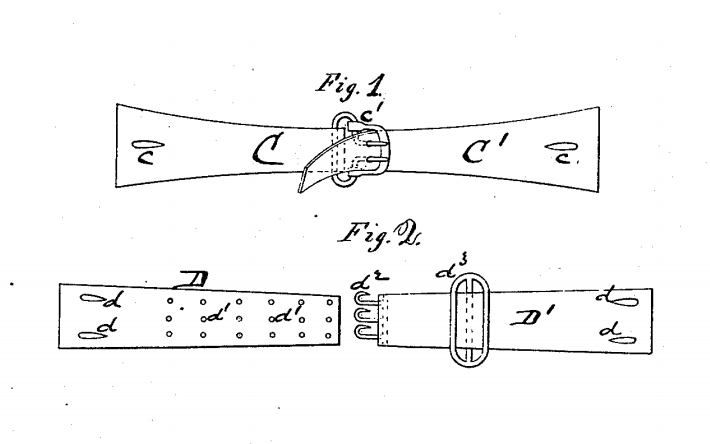How Mark Twain’s Hatred of Suspenders Drove Him to Invent
Under his given name, Samuel Clemens, Twain held several patents
/https://tf-cmsv2-smithsonianmag-media.s3.amazonaws.com/filer/43/1d/431d65fc-5d14-4afd-a2d2-34e06ca2eba8/mark-twain-391120_1280.jpg)
He loved cats, collected young girls and… hated suspenders. Samuel Clemens, AKA Mark Twain, hated suspenders so much, in fact, that he invented and patented an alternate solution for keeping his pants up.
His “improvement in adjustable and detachable straps for garments” was a button-on adjustable strap that could be used to tighten garments–it could pinch a shirt at the waist, for example. The patent was granted on this day in 1871.
“The advantages of such an adjustable and detachable elastic strap are so obvious that they need no explanation,” the patent reads. It would also be simple to make non-elastic detachable straps, Clemens wrote, “but I prefer to make them elastic.”
“Twain's invention was not only used for shirts, but for underpants and women's corsets as well,” writes the U.S. Patent and Trademark Office. In the longer term, writes Rebecca Greenfield for The Atlantic, “this clever invention only caught on for one snug garment: the bra. For those with little brassiere experience, not a button, nor a snap, but a clasp is all that secures that elastic band.”

Suspenders were only about two generations old when he filed his patent to replace them, writes Claire Suddath for Time. Therefore, Clemens held one of the first United States suspender-related patents.
Clemens is said to have found pants with suspenders uncomfortable. He “also believed strongly in the value of the patent system,” writes the patent office. In A Connecticut Yankee in King Arthur's Court, which was published in 1889, the main character says, "...the very first official thing I did in my administration—and it was on the very first day of it too—was to start a patent office; for I knew that a country without a patent office and good patent laws was just a crab and couldn't travel anyway but sideways and backwards.”
The author's affection for patents didn't end with the suspender improvement. Although the suspender-alternative patent was his first, he’d go on to to patent a popular self-pasting scrapbook and a history trivia game–along with writing A Connecticut Yankee, The Adventures of Tom Sawyer and the other books that made him famous.